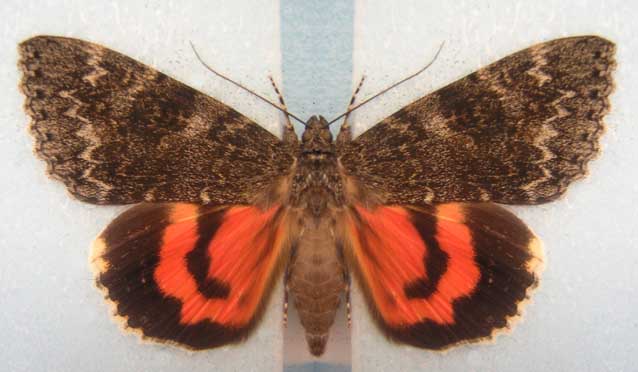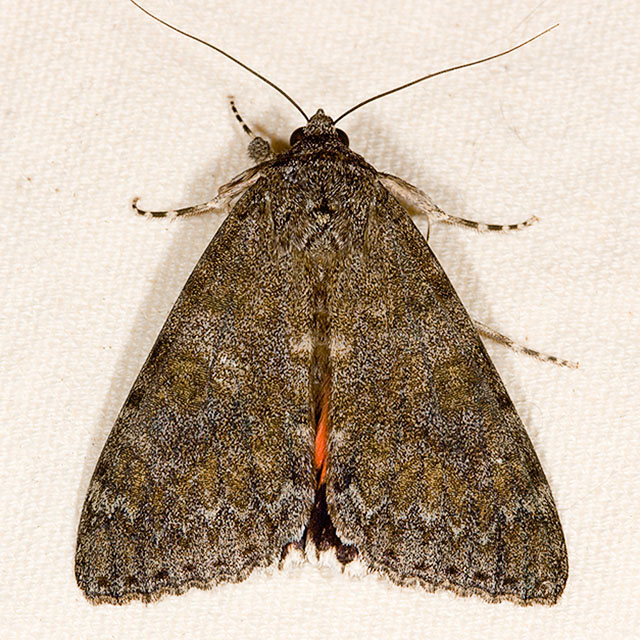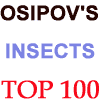Catocala californica
kah-TOCK-uh-lahmmkahl-ih-FOR-nih-kuh
W.H. Edwards, 1864

Catocala californica,
British Columbia.
This site has been created by
Bill Oehlke.
Comments, suggestions and/or additional information are welcomed by Bill.
| TAXONOMY:
Superfamily: Noctuoidea
Family: Erebidae, Leach, [1815]
Subfamily: Erebinae, Leach, [1815]
Tribe: Catocalini, Boisduval, [1828]
Genus: Catocala, Schrank, 1802
|
DISTRIBUTION:
It has also been reported in
Idaho,
Montana and
Nevada.
Moths formerly described as edwardsi Kusnezov, 1903;
elizabeth Cassino, 1918; and
erichi Brower, 1976, are now (2010) synonyms of C. californica.

Catocala californica, Waterton National Park, Alberta,
courtesy of Gary Anweiler.
Forewings are dark with a gritty appearance. Markings are generally
indistinct. Dark reniform spot is large and am and pm lines
are hard to spot. The subterminal line is inwardly lined with light
scales. Hindwing fringe is white, checked halfway to the outer edge
with black, with a black line on each wing vein extending through
the fringe. There is some orange bleeding at the apex. The black
median line terminates well before the inner margin.

Catocala californica female (68mm), Wenatchee, Chelan County, Washington,
original female taken at wine bait, courtesy of Pete Smytheman;
Bred ex female, Number One Canyon, Wenatchee, 22.viii.2009, emerged 21.v.2010.
FLIGHT TIMES AND PREFERRED FOOD PLANTS:
Catocala californica are usually on the wing from late June
to August.



Catocala californica, Stevenson, Skamania County,
Washington,
August 31, 2006, courtesy of John Davis.
The Catocala californica caterpillar shows a preference for
Juglans nigra (questionable) and Salix.
Pete Smytheman indicates he has reared larvae on willow and aspen, but they refused walnut.
ECLOSION:
Adults eclose from pupae at soil surface.
SCENTING AND MATING:
Catocala californica females
emit an airbourne pheromone and males use their antennae to track the
scent plume.
EGGS, CATERPILLARS, COCOONS AND PUPAE:
Eggs are deposited on
tree bark in the fall and hatch the following spring.
Larval Food Plants
Listed below are primary food plant(s) and alternate food plants.
It is hoped that this alphabetical listing followed by the common
name of the foodplant will prove useful. The list is not exhaustive,
although some species seem very host specific.
Experimenting with closely related foodplants is worthwhile.
Juglans nigra......
Populus
Salix
|
Black walnut
Aspen
Willow
|
Return to Main Index
This page is brought to you by Bill Oehlke and the
WLSS. Pages are on space rented from Bizland. If you would like to become a "Patron of the Sphingidae/Catocala Sites", contact Bill.
Please send sightings/images to Bill. I will do my best to respond to requests for identification help.
Enjoy one of nature's wonderments: Live Saturniidae (Giant Silkmoth) cocoons.

|

To show appreciation for this site, click on the flashing
butterfly to the left, a link
to many worldwide insect sites. |







